URBAN THREADS by Cara Jones
at The Outside Gallery
URBAN THREADS showcases the industrial inspired artwork of Newport artist Cara Jones.
Jones is a photographer who sees beauty in industrial landscapes and uses her lens to capture their weathered and utilitarian aesthetic forms. Her artwork aims to re-imagine and accentuate the unique characteristics of these landscapes, creating a new perspective that honours their history and evolution.

About the art
"Urban Threads" exhibit explores Melbourne's industrial inner west, finding beauty in decay and potential in revitalisation, through an artist's lens.
Jones creates abstract art pieces using photo manipulation techniques and digital tools. By superimposing and manipulating images, she transforms the original photo into a new artwork. Some pieces offer clues as to what the original image was, while others have been pushed past the point of recognition, leaving the viewer to interpret the piece in their own way.
Jones’ inspiration for this process came from her master’s degree in interior design at RMIT, where she aimed to create concept drawings for designs that were inspired by the site they were intended for. Her approach to creating artwork reflects this, as each piece responds to the original image in a unique way.
Typically, her finished artwork is printed onto museum-grade photopaper, framed, and hung in contemporary interiors. Jones suggests to her clientele to choose their preferred orientation for the artwork as they are often created through multiple rotations.
About the artist
Cara Jones is a fourth-generation photographer and Newport artist with a background in Interior Design from RMIT. Her works focus on the beauty of decayed industrial landscapes, which have been showcased in various exhibitions, such as Midsumma and Big West Festival. She has been living in the inner west for the past 25 years. Jones' notable accomplishment is being selected by the City of Melbourne to create a 93m long artwork for a hoarding around CH2 building in Lt Collins Street.

Shipping Container 7
Melbourne's western suburbs offer a striking visual with their vast container yards. The stacked containers loom large, waiting for their next shipment. Jones has found inspiration in the unique form of shipping containers and created the artwork 'Shipping Container 7', in which she celebrates their distinct shape by transforming it into a complex, layered visual form. Her art elevates the mundane container & celebrates its utilitarian beauty.
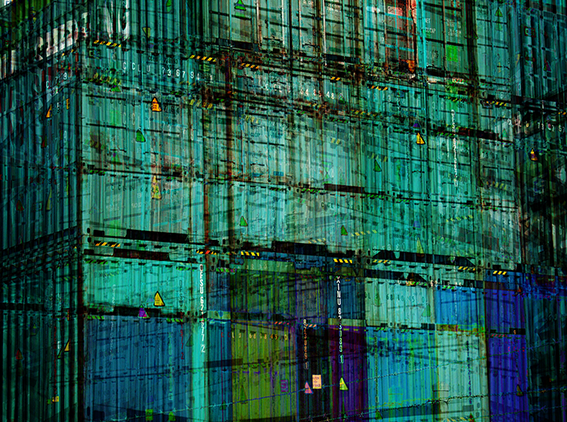
Shipping Container 34B
Jones has transformed a photograph of stacked green and blue shipping containers into a layered artwork called 'Shipping Container 34B'. By using superimposition, the artwork achieves a multi-dimensional quality, adding depth and texture to the otherwise flat image. Her piece aims to highlight the beauty in the utilitarian and often overlooked aspects of our built environment.
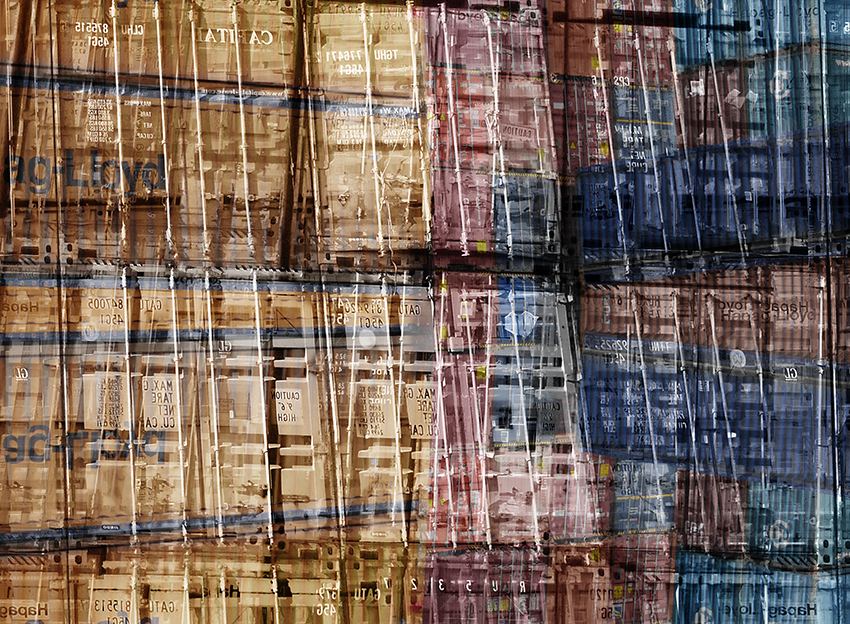
Shipping Container 8A1
"Shipping Container 8A1" is an artwork that highlights the beauty of the often-overlooked details found on the doors of shipping containers. The focus is on the two locking bars that keep the container secure and the information printed on the doors, such as the unique container number, company logo, and weight. The piece celebrates the functionality and practicality of these industrial objects, elevating them to objects of beauty through careful attention to detail. The artwork invites the viewer to appreciate the utilitarian design and aesthetic of shipping containers.

Red Rivets
'Red Rivets' aims to showcase the beauty of industrial details and was created from a photograph of an old red train at Newport Rail Workshops. The photo captures the side of the train, showcasing intricate details such as rivets, cargo latches, and ventilation grilles. Jones has transformed the photograph into an artwork by manipulating and enhancing the colours, textures, and patterns of the original image. The resulting artwork is a mesmerizing blend of industrial design and artistic expression, highlighting the beauty and complexity of the train's functional design.

Carriage 581A
During an open day at Newport Railway Workshops, Jones observed a rundown cargo carriage with a rich history waiting to be restored. The carriage was rusty in places and had various layers of paint scraped back, ready for the restoration team. Signage had been removed too, with only the carriage number 518-A sticker remaining. Inspired by the carriage doors, Jones decided to incorporate them into her artwork to celebrate the train carriage’s layered history.
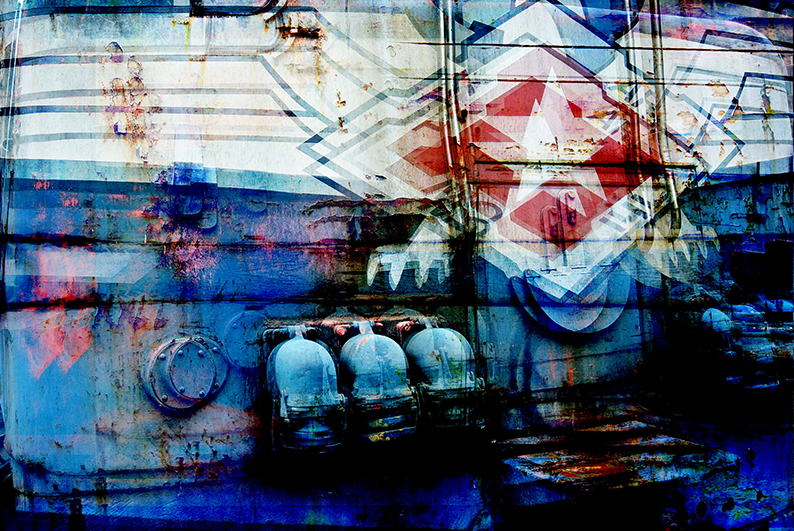
Ghost Rider
The L class electric locomotives of the Victorian Railways were typically painted in the blue and gold VR colours. However, for the filming of the movie Ghost Rider in 2005, locomotive L1169 was painted to match the "Texas Eagle". The Texas Eagle is a is a 2,100km daily passenger train with a route travelling between Chicago, Illinois, and San Antonia, Texas. This local locomotive was featured in a key scene of the movie, which was shot at Newport Railway Workshops. Jones captured a photo of the L1169, highlighting the 5 point star logo on the locomotive's front, and incorporated it into her artwork.

Accordion
‘Accordion’ is an artwork featuring a photograph of an orange regional train carriage and a red sleeper carriage ‘V & SA’ connected by a flexible corridor, along with a secondary image of a cargo carriage. The artist worked these images to create an 'architectural drawing' that is inspired by the unique history and landscape of the Newport Railway Workshops. The artwork can be interpreted as either an exterior view of a new building or an architectural detail inspired by the industrial elements visible on the site.
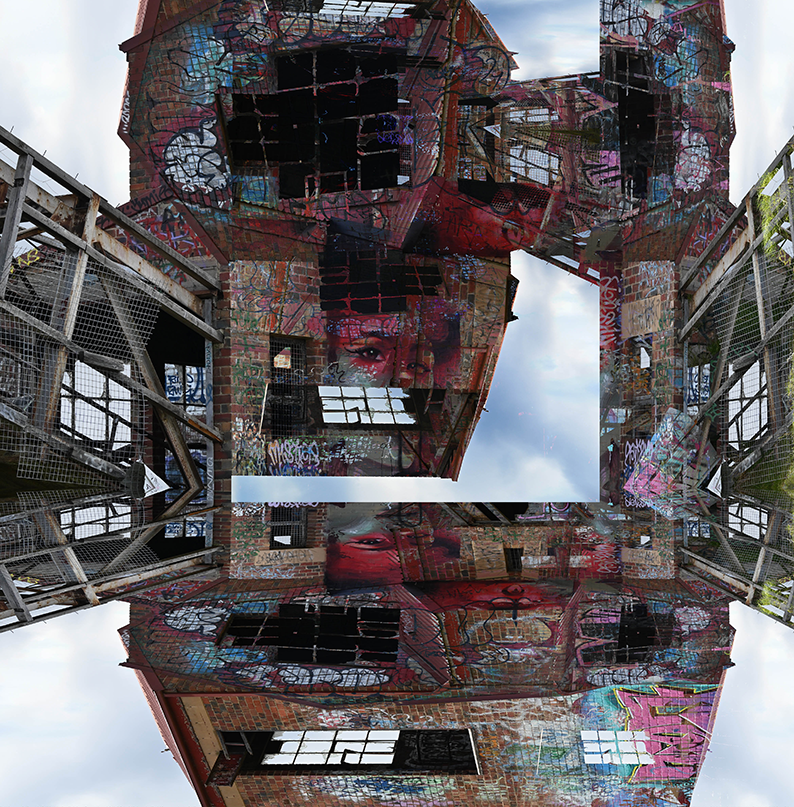
Skyview
Bradmill cotton factory in Yarraville is an historic textile manufacturing site dating back to 1924. The derelict multi storey boiler house is a prominent feature of the site, visible from the West Gate Freeway along with a steel framed conveyor structure leading to a small brick building. The entire site is undergoing redevelopment. Jones' artwork "Skyview" uses the existing derelict structure as inspiration for a new architectural possibility or concept drawing for the site.
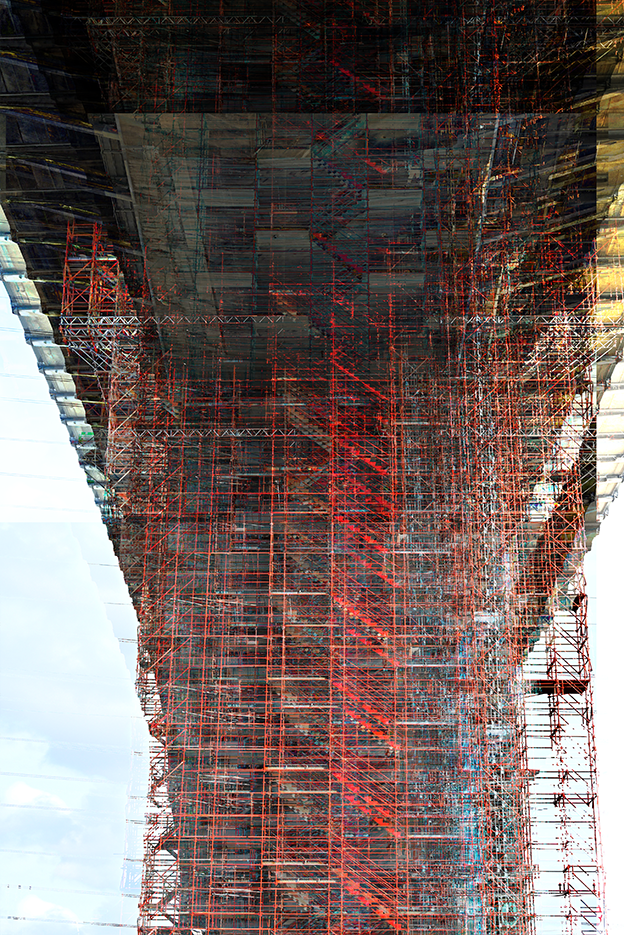
West Gate Red
As part of the West Gate Tunnel Project, the West Gate Freeway needed to be strengthened to accommodate the widening from 8 to 12 lanes. To support this process, scaffolding was erected under the bridge, providing access and support solutions. Jones captured a photo of this scaffolding structure from Hyde St, shooting west. She then edited the photo to enhance the appearance of the bridge, making it look incredibly strong and capable of withstanding the project future loads.
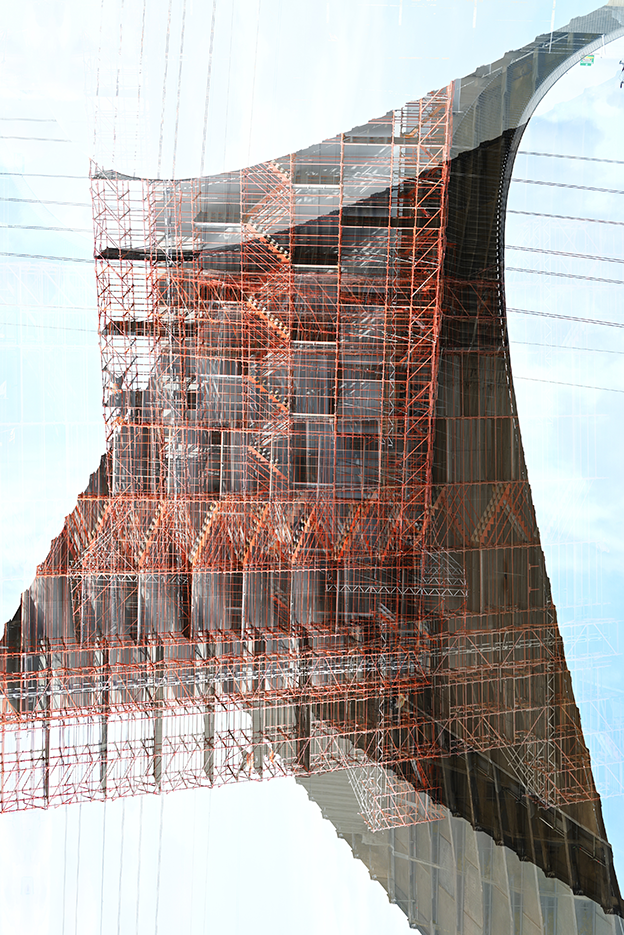
West Gate Curve
'West Gate Curve' is an artwork that celebrates the unique design of the West Gate Bridge through the use of sweeping curves and repetitive patterns of concrete box girders. The artwork transforms these elements into a new structure that showcases the beauty of the bridge's form. The scaffolding recently erected during the bridge's strengthening works adds to the visual impact of the piece, highlighting the ingenuity and innovation involved in the bridge's construction and maintenance, and its evolution over time.

West Gate Blue
‘West Gate Blue’ is an artwork that transforms a photograph of scaffolding beneath the West Gate Bridge into an unrecognizable landscape. The artist seeks to create a new architectural dream, drawing inspiration from the industrial elements present in the original photograph. Through this process, the artist aims to challenge our perception of what constitutes a landscape and encourage us to see beauty in unexpected places.